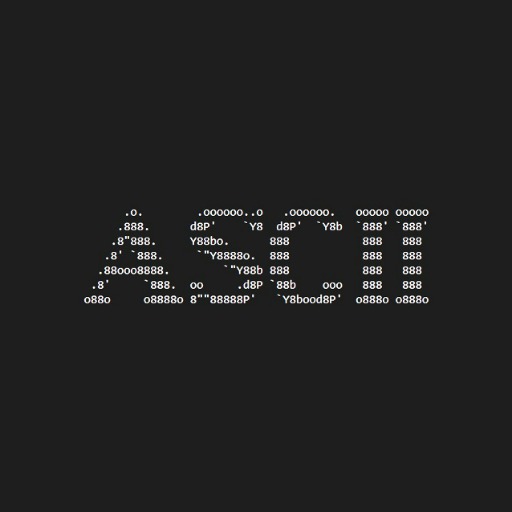Peer Review: Analyzer-in-depth peer review tool.
AI-powered peer review for any content.
I'll peer review anything (research papers, code, books, etc).
Examine the algorithm used in this research.
Critique the statistical model in this paper.
Assess the coding practices in this study.
Evaluate the theoretical basis of this publication.
Related Tools
Load More
Lab Report
🔷#𝟏 𝐏𝐞𝐫𝐬𝐨𝐧𝐚𝐥𝐢𝐳𝐞𝐝 𝐋𝐚𝐛 𝐑𝐞𝐩𝐨𝐫𝐭 𝐓𝐨𝐨𝐥🔷

AnalyzePaper
Takes in a research paper or article, analyzes its claims, study quality, and results confidence and provides an easy to understand summary.

Paper Reviewer
Human-like, detailed reviewer for scientific papers.

Literature Review
Summarise and do literature reviews on academic papers

Academic Literature Review Builder
Writes main argument in referenced academic paragraphs.

Article Analyst
I summarize and analyze articles, providing key insights and themes. I also discuss the broader implications of these articles. Upload a PDF of your article or copy a link of the article in the chat.
20.0 / 5 (200 votes)
Introduction to Peer Review: Analyzer
Peer Review: Analyzer is designed as a specialized tool for providing detailed, technical feedback on a wide range of materials, including scientific publications, code, and creative writing. Its purpose is to offer a comprehensive analysis that goes beyond superficial reviews, focusing on the technical, methodological, and narrative aspects of the work. This tool is especially useful in academic and professional settings, where deep analysis and constructive feedback are essential for improving the quality and impact of the work. For example, when reviewing a scientific paper, Peer Review: Analyzer would not only evaluate the statistical methods used but also critically examine the study's design, the validity of its conclusions, and its contribution to the existing body of knowledge.

Main Functions of Peer Review: Analyzer
Scientific and Academic Review
Example
A researcher submits a paper on the efficacy of a new drug. Peer Review: Analyzer would evaluate the robustness of the clinical trial design, the appropriateness of the statistical analyses, and the generalizability of the findings to broader populations.
Scenario
In this scenario, Peer Review: Analyzer would critique the study's methodology, perhaps suggesting more rigorous controls or alternative statistical tests that could better validate the findings. Additionally, it would assess how well the paper contextualizes its findings within existing literature.
Code Review
Example
A developer submits a Python script intended to process large datasets efficiently. Peer Review: Analyzer would examine the code for clarity, efficiency, and scalability, identifying potential bottlenecks or opportunities for optimization.
Scenario
Here, Peer Review: Analyzer would not only check if the code works but also analyze its structure for maintainability, suggest improvements for readability, and ensure it follows best practices in software development. It might also test the code against edge cases or suggest alternative algorithms that could perform better with larger datasets.
Creative Writing Review
Example
An author submits the first draft of a novel. Peer Review: Analyzer would assess the narrative structure, character development, and thematic depth, providing feedback on how to enhance the story's coherence and emotional impact.
Scenario
In this case, Peer Review: Analyzer would look for plot inconsistencies, evaluate the pacing, and offer suggestions for deepening character arcs. It might recommend changes to the dialogue to make it more natural or suggest ways to better integrate themes into the narrative, ultimately helping the author refine their creative expression.
Ideal Users of Peer Review: Analyzer
Researchers and Academics
This group includes scientists, scholars, and students who are involved in producing or reviewing academic papers, theses, or dissertations. They would benefit from the detailed methodological and statistical analysis provided by Peer Review: Analyzer, which helps ensure the rigor and validity of their work. The tool's ability to situate research within broader theoretical frameworks is particularly valuable for those looking to publish in reputable journals.
Software Developers and Engineers
Software professionals who are developing, reviewing, or maintaining code would find Peer Review: Analyzer's detailed code analysis useful. The tool helps them write more efficient, maintainable, and scalable code, which is crucial in both individual projects and collaborative environments. It also assists in identifying potential issues before they become major problems, improving the overall quality of the software.
Authors and Creative Writers
Authors, whether they are working on novels, short stories, or other forms of creative writing, can use Peer Review: Analyzer to refine their narratives. The tool offers insights into plot development, character consistency, and thematic integration, helping writers produce more compelling and polished work. This is particularly useful for those preparing manuscripts for publication or seeking feedback before submitting to literary agents or publishers.

How to Use Peer Review: Analyzer
Visit aichatonline.org
Start by visiting aichatonline.org where you can access Peer Review: Analyzer without needing to sign up or pay for ChatGPT Plus. A free trial is available for exploration.
Select Your Content Type
Choose the type of content you want to analyze, whether it’s academic writing, code, fiction, or any other form. This helps tailor the analysis to your specific needs.
Input Your Content
Paste or upload your content into the provided text box or upload feature. Ensure your content is clear and complete for a thorough review.
Customize Your Analysis
Select specific aspects you want to focus on, such as statistical methods, narrative structure, or code efficiency. You can also request general feedback if you’re looking for a broad review.
Review Feedback and Iterate
Once you receive detailed feedback, use the insights to refine your work. Repeat the analysis if needed, especially after making significant revisions.
Try other advanced and practical GPTs
ASCII Text Art
AI-powered ASCII text art creation tool

Software Architecture Visualiser
AI-powered tool for clear software architecture visualization.

Professional Summariser
AI-powered tool for precise text summarization.

Cyber Security CISO Assistant
AI-powered cybersecurity guidance at your fingertips.

Search Ads Headline Generator
AI-powered tool for perfect ad headlines

Excel Formula AI Generator & Data Analyst
AI-Powered Excel Formula & Data Insights

Your Ex-Girlfriend Jessica
AI-powered answers with attitude

Explain Like I'm Five
Simplifying Complex Concepts with AI-Powered Clarity

Weight Loss Scientist
AI-Powered Weight Management

Ruby On Rails
Build scalable web apps with AI-powered Ruby on Rails.

CV & Career Coach
AI-powered career insights for success.

Mythical Map Maker
AI-powered map creation for fantastical worlds.

- Academic Writing
- Code Review
- Narrative Structure
- Fiction Analysis
- Statistical Review
Common Questions about Peer Review: Analyzer
What types of content can Peer Review: Analyzer review?
Peer Review: Analyzer can review a wide range of content, including academic papers, code, fiction writing, and more. It offers tailored feedback based on the type of content, ensuring a detailed and relevant analysis.
How does Peer Review: Analyzer handle code review?
For code reviews, Peer Review: Analyzer examines clarity, efficiency, error handling, and scalability. It provides feedback on best practices, suggesting improvements for better performance and maintainability.
Can Peer Review: Analyzer help with academic writing?
Yes, it can analyze academic papers for structure, clarity, and the robustness of statistical methods used. It also considers the demographic nuances of studies and offers insights on how well the paper connects to broader theoretical frameworks.
Is Peer Review: Analyzer useful for creative writing?
Absolutely. It reviews fiction by analyzing narrative structure, character development, and thematic coherence. The tool also provides feedback on dialogue, pacing, and the overall storytelling quality.
Does Peer Review: Analyzer require any specific formatting for input?
There is no strict formatting requirement. However, providing clear, well-organized content helps the tool deliver more accurate and detailed feedback. For code, ensure that it is properly indented and commented where necessary.